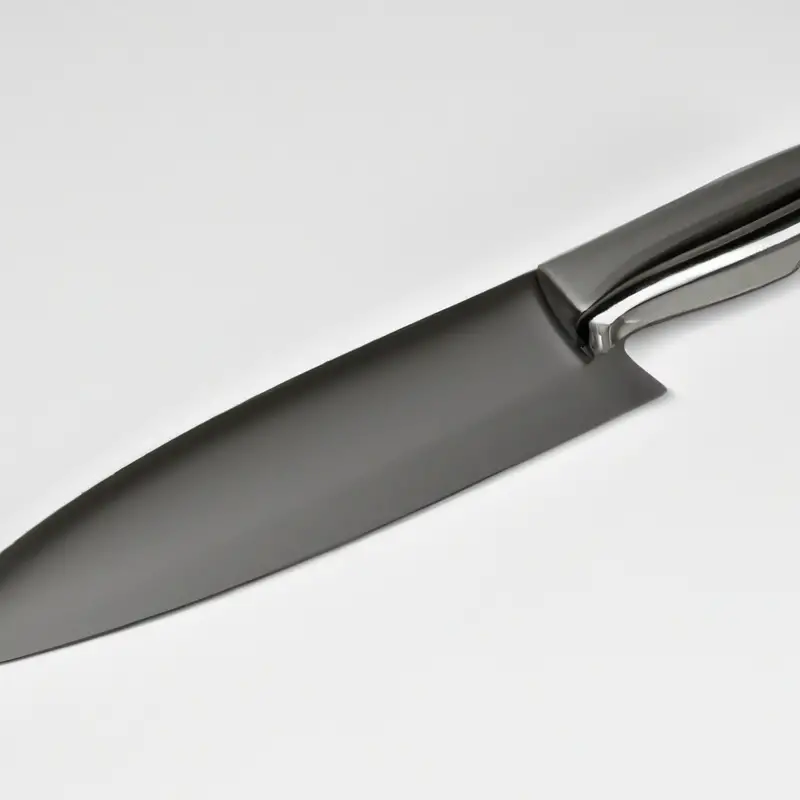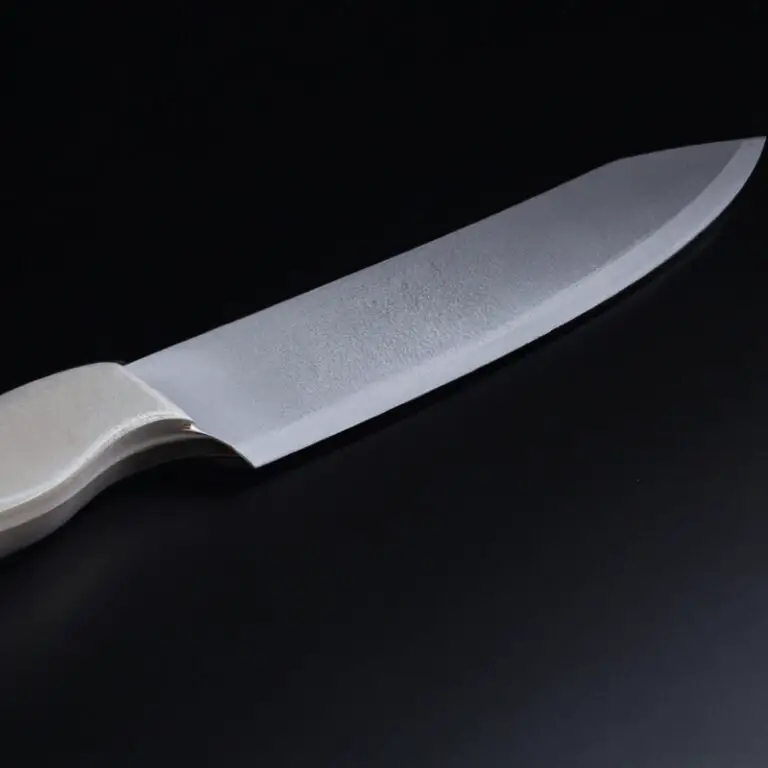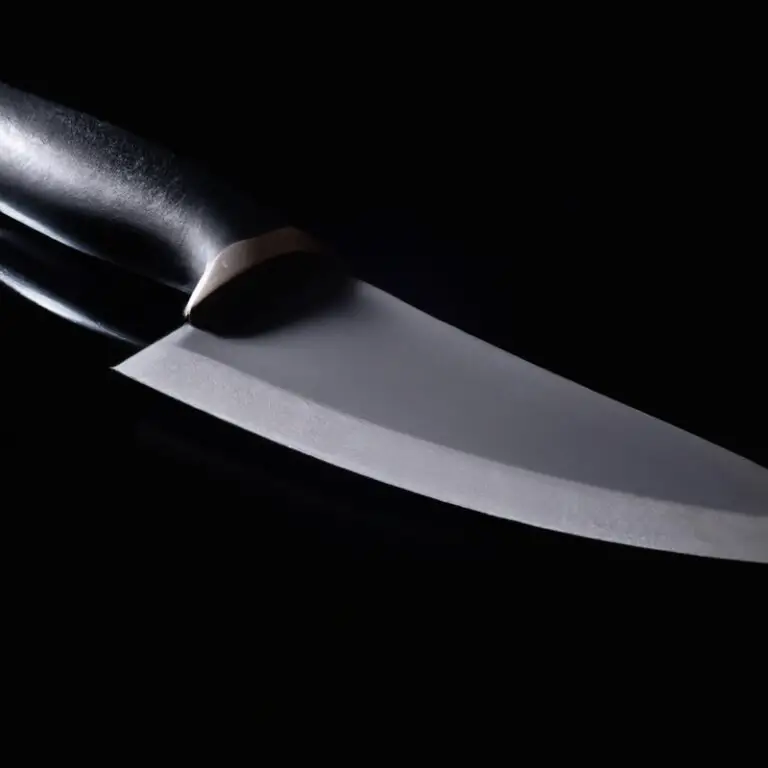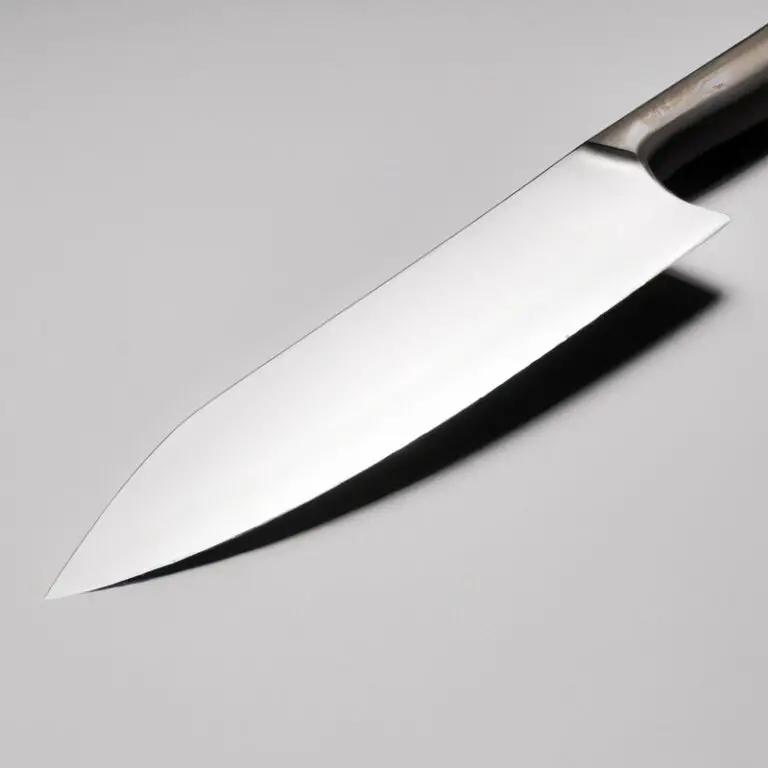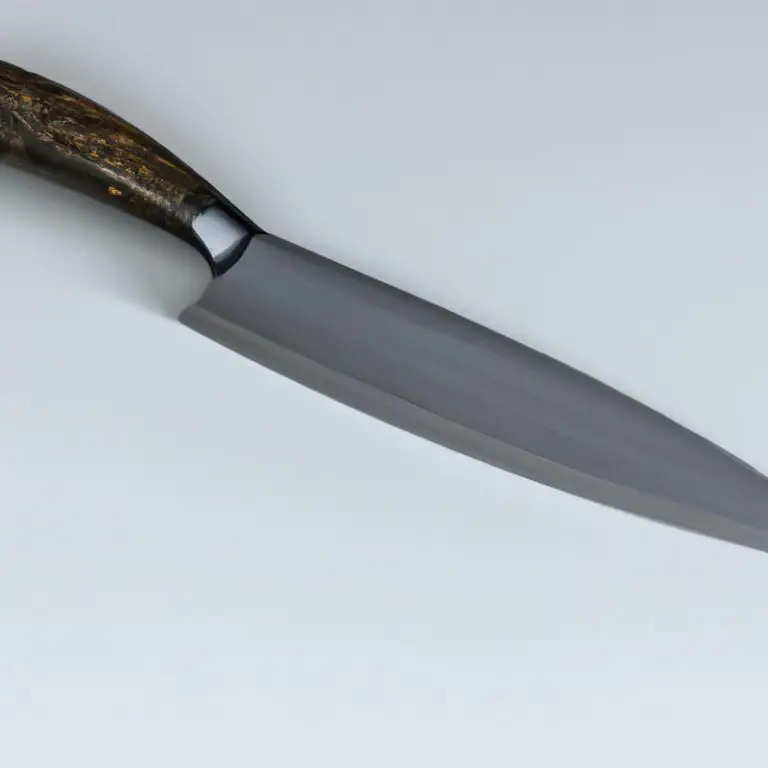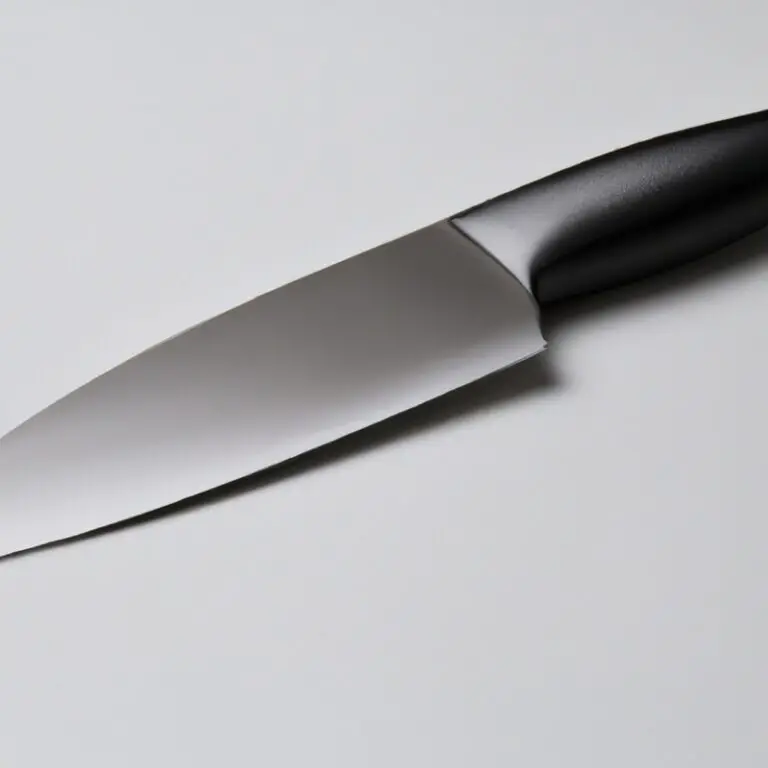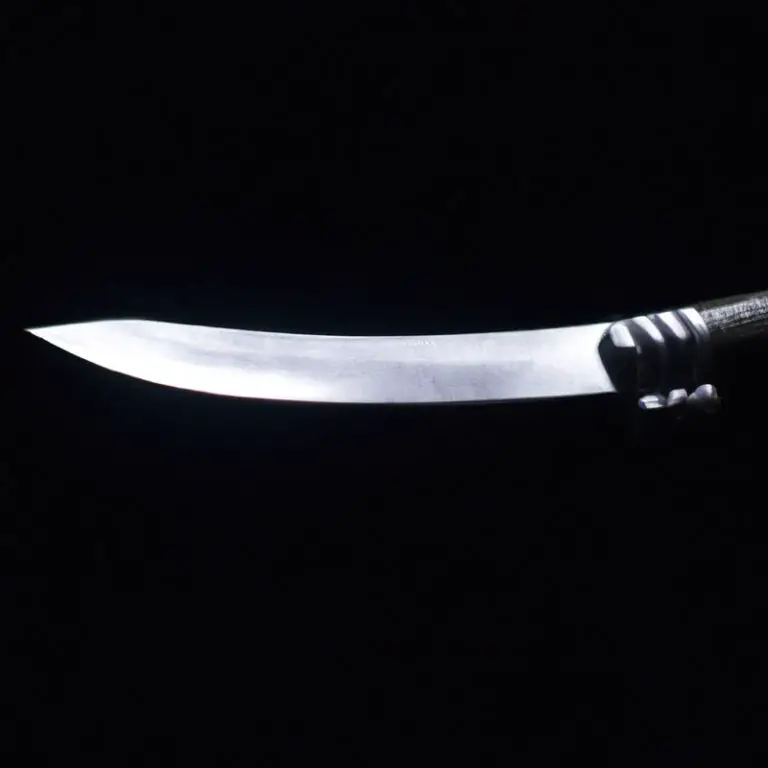What Are The Advantages Of a Santoku Knife For Home Cooking? Slice With Precision
Key Takeaways:
- A Santoku knife is a versatile kitchen tool that can be used for chopping, slicing, and dicing a wide variety of ingredients in home cooking.
- The unique shape of the Santoku knife, with its wider blade and flat edge, helps to minimize food sticking to the blade and ensures precision and control in cutting.
- The ergonomic design of the handle and the balanced weight distribution of the Santoku knife make it comfortable and easy to use for extended periods of time.
- Investing in a high-quality Santoku knife can elevate the home cooking experience and save time and effort in the kitchen.
Slice, dice, and chop like a pro with a Santoku knife! This sleek and versatile kitchen tool has become a popular choice among home cooks, thanks to its unique design and impressive capabilities. From easily handling complex tasks to reducing prep time, a Santoku knife can be a game-changer in your kitchen.
Whether you’re a seasoned chef or an amateur cook, understanding the advantages of a Santoku knife can help you elevate your culinary skills and make your cooking experience more enjoyable.
In this article, we’ll explore the various benefits of this knife and help you determine if it’s the right choice for you.
| Advantages of a Santoku Knife |
|---|
| 1. Versatility – can be used for slicing, chopping, and dicing |
| 2. Sharpness – thinner and sharper blade makes it easier to cut through food |
| 3. Comfort – ergonomic handle and lightweight design reduce hand fatigue and make it easier to handle |
| 4. Ease of use – wide blade makes it easier to transfer food from cutting board to pan |
| 5. Aesthetics – unique design adds style to your kitchen |
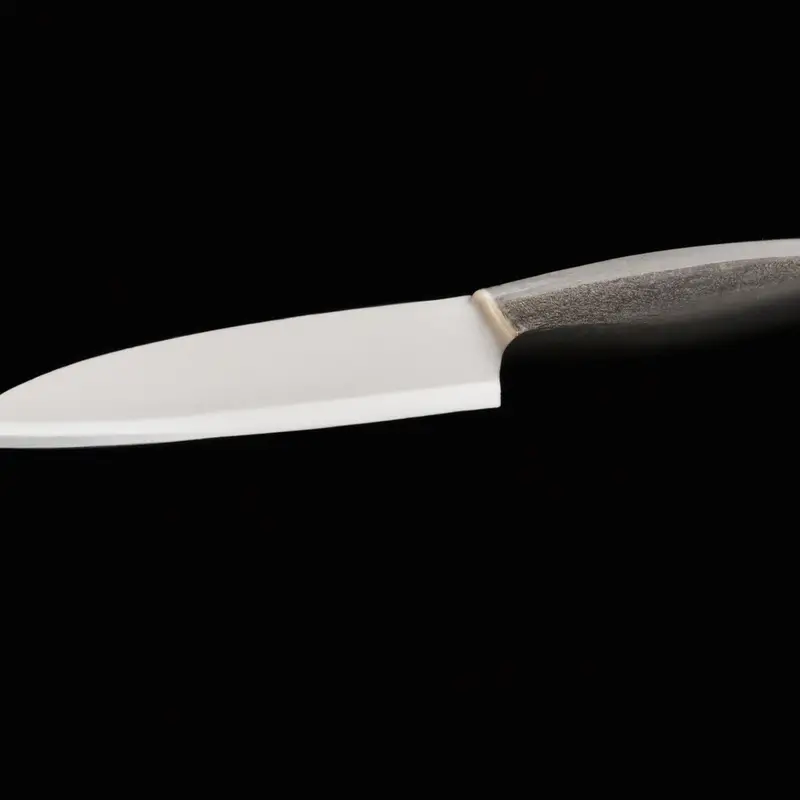
Understanding Santoku knives: A beginner’s guide to the most versatile kitchen tool
Santoku knives are popular kitchen tools that originated in Japan. They have become a popular choice for home cooks due to their versatility.
Unlike traditional Western chef’s knives, Santoku knives have a shorter, wider blade that is typically around 7 inches in length.
They are designed to slice, dice, and chop vegetables, fruits, and meats with ease. Santoku knives are made with high-quality materials, such as stainless steel or high-carbon steel, which make them durable and long-lasting.
The sharp blade edge is ideal for precision cutting and creates clean, straight slices.
The flat blade also makes it easy to scoop up ingredients from the cutting board. When choosing a Santoku knife, it is important to consider the size and weight of the knife.
A smaller knife may be easier to handle for those with smaller hands, while a larger knife may be better for those with larger hands or for cutting larger ingredients.
Look for a Santoku knife with a comfortable handle that fits well in your hand for maximum control. Overall, a Santoku knife is a versatile and durable kitchen tool that can make meal prep easier and more efficient.
It is a great investment for home cooks who value precision and ease of use.
Santoku vs Chef’s knife: Which is the better option for home cooks?
Both Santoku and Chef’s knives are essential kitchen tools, but they have distinct differences that make them better suited for different tasks. The Santoku knife is designed to be a versatile all-purpose knife that excels at slicing, dicing, and mincing vegetables and herbs.
It has a shorter, wider blade than the Chef’s knife, which makes it easier to control and maneuver.
On the other hand, the Chef’s knife has a longer and more curved blade that allows for smoother rocking motion when chopping and slicing. It is better suited for tasks that require more force, such as breaking down poultry and meat.
When it comes to selecting the better option for home cooks, it ultimately depends on personal preference and cooking habits.
If you primarily prepare vegetables and need a knife that can make quick work of slicing and dicing, the Santoku knife might be the better choice. However, if you cook meat frequently or need a knife that can handle heavier tasks, the Chef’s knife might be a better fit.
It’s important to note that both knives require proper maintenance and sharpening to perform their best.
Investing in a high-quality knife, regardless of which option you choose, is also crucial for optimal performance and longevity.
Santoku knife blade composition: What makes it different from other knives?
The blade composition of a Santoku knife is what sets it apart from other knives. Unlike Western-style knives, Santoku knives have a thinner and harder blade that is made of a combination of steel and high carbon.
This composition allows for a sharper and more durable edge that can retain its sharpness for longer periods of time.
Additionally, the blade’s design has a flatter edge that is ideal for slicing, chopping, and dicing, making it more versatile in the kitchen. The hollow edge or Granton edge on some models prevents food from sticking to the blade, ensuring a seamless and efficient cutting experience.
Overall, the unique blade composition of a Santoku knife makes it a reliable and effective tool for everyday home cooking.
How to choose the right size Santoku knife for your home kitchen
When it comes to choosing the right size Santoku knife for your home kitchen, it is important to consider your personal preferences and the tasks you plan to use the knife for. If you prefer a smaller knife, a blade length of around 5-7 inches will suit you better.
This size is ideal for precise tasks such as mincing garlic and onions, slicing shallots, and chopping herbs.
If you prefer a larger knife, a blade length of around 7-8 inches is ideal for heavier tasks such as chopping vegetables and meats. A longer blade will also allow for smoother slicing motions, making it easier and more comfortable to work with.
Ultimately, the size of your Santoku knife will depend on your personal needs and preferences.
It is important to choose a size that feels comfortable in your hand and is suited to the tasks you plan to use it for.
Lifestyles of the sharp and precise: How Santoku knives can help busy home cooks
Santoku knives are ideal for busy home cooks who value precision and speed in their meal preparation. The unique design of the Santoku knife, with its shorter, wider blade, makes it perfect for chopping vegetables, slicing meat, and preparing fish.
The sharp, thin blade of a Santoku knife allows for quick, clean cuts, making food preparation a breeze.
With a Santoku knife, busy home cooks can save time in the kitchen and create dishes that are beautifully presented. Furthermore, these knives are typically made of high-quality materials, ensuring that they will last even under frequent use.
So, if you want to elevate your cooking skills and efficiency in the kitchen, consider investing in a Santoku knife.
What tasks are Santoku knives best suited for in the home kitchen?
Santoku knives are incredibly versatile in the kitchen and are the go-to tool for home cooks. Santoku knives are best suited for tasks that involve slicing, dicing, and chopping vegetables, fruits, and boneless meats.
They excel at producing clean, precise cuts thanks to their sharp blades and lightweight design.
Santoku knives are particularly effective in cutting through thin, soft items, such as tomatoes, cucumbers, and herbs. They are also useful in cutting through food items with a hard exterior, such as melons, pineapples, and winter squashes.
Thanks to their wide blade, Santoku knives can be used to scoop and transfer ingredients from the cutting board to a pot or pan.
However, Santoku knives are not recommended for tasks that require heavy chopping or cutting through bone-in meats. These tasks are best done with a heavy-duty cleaver or a bone saw.
Santoku knives are a versatile kitchen tool that excels in slicing, dicing, and chopping vegetables, fruits, and boneless meats.
They are not recommended for heavy-duty tasks that require chopping or cutting through bone-in meats.
Slice, dice, and chop like a pro: Mastering knife skills with Santoku knives
Santoku knives are designed to slice, dice, and chop food with ease and precision. When using a Santoku knife, it’s important to follow some basic techniques to avoid injury and achieve optimal results.
Here are some tips to help you master your knife skills with a Santoku:
- Grip the handle firmly with your dominant hand, while placing your other hand on top of the blade for stability.
- Hold the food with your non-dominant hand and keep your fingers curled inward to avoid cutting them.
- Use a rocking motion to chop, keeping the tip of the blade on the cutting board while lifting the handle to create a smooth, continuous motion.
- For slicing, use a forward motion while keeping the blade at a slight angle to create thin, even slices.
- To dice, start by cutting the food into long thin slices, then rotate the pile of slices 90 degrees and chop into small, even pieces.
By practicing these techniques, you can become a pro at using a Santoku knife and make your kitchen tasks easier and more efficient.
How to maintain and sharpen Santoku knives for prolonged use
To maintain and sharpen Santoku knives for prolonged use, follow these tips:
- Clean the knife after every use with warm water and soap. Avoid using abrasive sponges or harsh chemicals that can damage the blade.
- Dry the knife completely before storing it in a knife block or sheath to prevent rust and corrosion.
- Sharpen the knife regularly with a sharpening stone or honing steel to maintain its sharp edge. Start with a coarse grit stone and move to a finer grit for a polished edge.
- Use a proper cutting board, such as wood or plastic, to prevent the blade from dulling quickly.
- Store the knife in a safe and secure place to avoid accidents and damage.
- Don’t use the knife for tasks it is not suited for, such as opening cans or unscrewing lids. This can damage the blade and require more frequent sharpening.
By following these simple tips, you can keep your Santoku knife in top shape for years of use in your home kitchen.
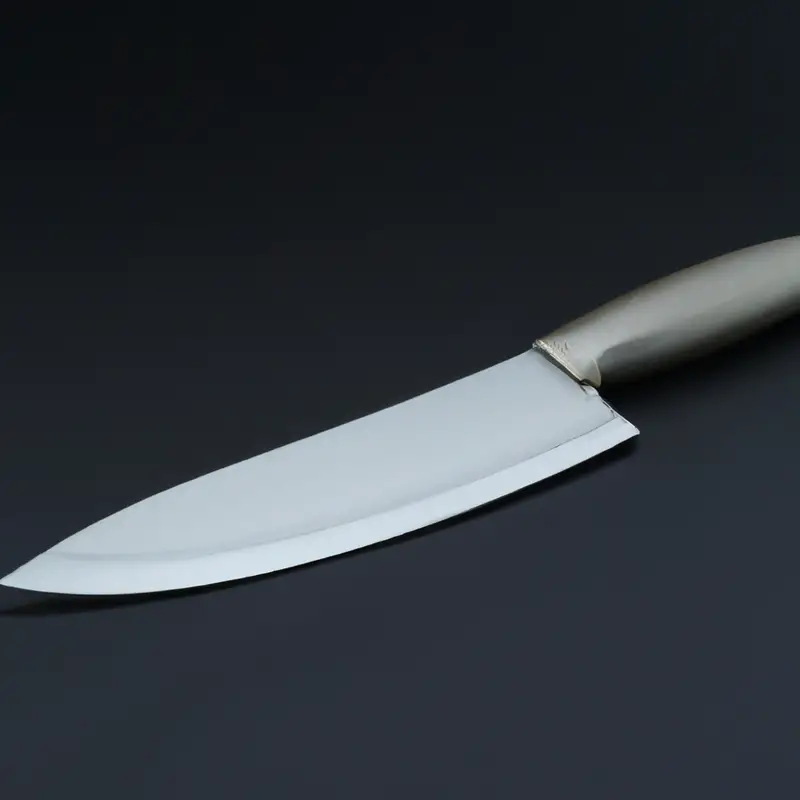
Investing in a high-quality Santoku knife: What to look for in terms of handle, blade materials, and design
When investing in a high-quality Santoku knife, it is important to consider three key factors: handle, blade materials, and design. Handle: Look for a handle that is comfortable to grip and provides a good balance.
Choose a handle made of durable and moisture-resistant material, such as hardwood or polymer.
Blade Materials: High-carbon stainless steel is a popular choice for Santoku knives as it provides durability, sharpness and resistance to rusting. The blade should be thin and sharp, with a slight curve to allow for easy chopping and slicing.
Design: A good Santoku knife should have hollow cheeks or grantons on the sides of the blade, which prevent food from sticking to the blade.
The blade should also be flat for stability and precision, providing a clean cut for meats and vegetables. When investing in a high-quality Santoku knife, keep in mind that it is a long-term investment.
Choose a knife that is durable and made of high-quality materials, and always make sure to maintain and sharpen it properly for prolonged use.
The cultural significance of the Santoku knife and how it has revolutionized modern home cooking
The Santoku knife is a significant cultural symbol in Japanese cuisine, traditionally used by home cooks and professional chefs for centuries. Its name means “three virtues,” representing the knife’s ability to chop, slice, and dice with ease.
In recent years, the Santoku knife has revolutionized modern home cooking as more people seek to enhance their culinary skills by using this versatile and efficient kitchen tool.
Its unique design and sharp edge make it perfect for mincing herbs, slicing vegetables, and cutting through meats. It’s a must-have tool for any home cook wanting to up their cooking game.
With its rich cultural history and practical use in home kitchens, the Santoku knife represents a truly valuable addition to any cook’s kitchen.
Final Verdict
Investing in a high-quality Santoku knife can be a game-changer for home cooks looking to elevate their culinary skills. With its unique blade shape, ergonomic handle, and versatile cutting capabilities, this Japanese knife has become a prized possession in many kitchens around the world.
From slicing meat and fish to chopping vegetables and herbs, the Santoku knife can handle it all with precision and ease.
By understanding its advantages and proper maintenance, you can ensure that your Santoku knife remains a valuable tool in your kitchen for years to come. Trust us, this is one investment that you won’t regret.

